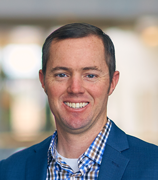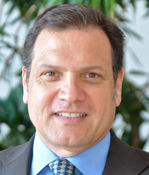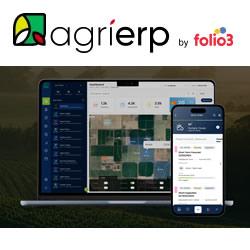The discussions at the summit helped us see where we could make the greatest impact. Sustainable agriculture came out of that conversation. We refer to it as the food, energy, water nexus.
 Cleantech Incubator Announces First Agtech Cohort
Cleantech Incubator Announces First Agtech Cohort

Trish Cozart, Sam Fiorello, Ramsay Huntley for | The Wells Fargo Innovation Incubator (IN2)
Please tell us a bit about the IN2 program and its goals?
 Cozart: The Wells Fargo Innovation Incubator (IN2) is a technology incubator and platform funded by the Wells Fargo Foundation and administered out of the National Renewable Energy Laboratory (NREL). The program started in 2014 with the goal of speeding the path to market for early-stage clean technologies by providing funding and technical assistance that leverages the capabilities, facilities, equipment and deep expertise at NREL. IN2 fills a gap in a startup’s journey to commercialization by helping promising technologies get to market. The program looks for technologies that have the potential for a positive environmental impact AND are underinvested in because of a technological barrier to entry; that is, investors need to see additional third-party validation before backing the company with dollars.
Cozart: The Wells Fargo Innovation Incubator (IN2) is a technology incubator and platform funded by the Wells Fargo Foundation and administered out of the National Renewable Energy Laboratory (NREL). The program started in 2014 with the goal of speeding the path to market for early-stage clean technologies by providing funding and technical assistance that leverages the capabilities, facilities, equipment and deep expertise at NREL. IN2 fills a gap in a startup’s journey to commercialization by helping promising technologies get to market. The program looks for technologies that have the potential for a positive environmental impact AND are underinvested in because of a technological barrier to entry; that is, investors need to see additional third-party validation before backing the company with dollars.
IN2 began with a focus on improving energy efficiency in commercial buildings (40% of energy is consumed by commercial buildings). Now the program has expanded into Agtech. The first Agtech cohort was selected this spring and will receive technical assistance from the Donald Danforth Plant Science Center (Danforth Center) in St. Louis.
Why did the IN2 program decide to expand into agriculture technology/How did the program come to this decision?
Cozart: After the first three years, it was evident the IN2 model was working and was helping to address the technology gap it was intended to fill. In 2017, IN2 hosted a summit bringing together its stakeholders and partners to discuss opportunities to apply the IN2 model into new technology verticals. Key discussion themes centered around transportation, housing technologies and, most notably, tackling the nexus of food, energy and water.
 Huntley: The discussions at the summit helped us see where we could make the greatest impact. Sustainable agriculture came out of that conversation. We refer to it as the food, energy, water nexus. It’s an area where this type of disruptive innovation is apt and where we can apply the same methodology. Wells Fargo has a lot to bring to the table on this—we’re the largest agricultural lender in the country and have been for more than 20 years. We think this is an area where it’s fitting for our philanthropy, and we also have lots of connections up and down the value chain to see how these innovations can benefit clients and customers.
Huntley: The discussions at the summit helped us see where we could make the greatest impact. Sustainable agriculture came out of that conversation. We refer to it as the food, energy, water nexus. It’s an area where this type of disruptive innovation is apt and where we can apply the same methodology. Wells Fargo has a lot to bring to the table on this—we’re the largest agricultural lender in the country and have been for more than 20 years. We think this is an area where it’s fitting for our philanthropy, and we also have lots of connections up and down the value chain to see how these innovations can benefit clients and customers.
Cozart: After the summit, IN2 commissioned a white paper authored by members in our network of partners to look closer into three areas of the food, energy, water nexus: water conservation, food system inefficiencies, and sustainable production through digital agriculture. We then chose sustainable production as our pilot Agtech incubation area. We needed a technical partner who could provide the same world-class research standard and facilities for agriculture that NREL brings to building technologies, and the Danforth Center was a perfect fit. IN2 announced its expansion in 2018 and brought on its first agriculture cohort in April 2019.
What distinguishes this Agtech incubator from similar programs?
Cozart: The combination of IN2’s offering, program and purpose make it exceptional. The offering of $250,000 in non-dilutive capital in the form of technical assistance at a world-class laboratory is an incredible opportunity for a startup. That $250,000 is worth far more than that same value in cash-- the expertise and connections that come with this award are priceless. The IN2 program is time-tested and robust. Our invitation-only selection process begins with referrals from our Channel Partner Network of incubators, accelerators, and universities across the country. Then, three consecutive boards review and down select the applicants. First, a technical review board at the lab, followed by the Wells Fargo board, and, finally, our External Advisory Board made up of industry experts makes the final cut. And probably most importantly, the purpose of this program is unique. The philanthropic nature of the program to make real change and environmental impact is at the heart of what makes IN2 uniquely different from most business incubators or investment programs.
 Fiorello: IN2 is unique because no other program exists to accomplish what it aims to accomplish. Currently, there is funding for basic research that generates new discoveries and technology development, but most of that funding is federal. However, often when a promising new technology is on a path toward commercialization, there is a hole where enterprises often die because there is a gap in funding. Some refer to this as the “valley of death,” and it exists because venture capitalists and other professional funding sources need more data to de-risk the idea. Through this unique partnership between Wells Fargo, NREL and the Donald Danforth Plant Science Center, early-stage companies are matched with our scientists who have both the expertise and access to best-in-class facilities that can generate, in 12 - 18 months, the data they need to attract Series A funding to launch.
Fiorello: IN2 is unique because no other program exists to accomplish what it aims to accomplish. Currently, there is funding for basic research that generates new discoveries and technology development, but most of that funding is federal. However, often when a promising new technology is on a path toward commercialization, there is a hole where enterprises often die because there is a gap in funding. Some refer to this as the “valley of death,” and it exists because venture capitalists and other professional funding sources need more data to de-risk the idea. Through this unique partnership between Wells Fargo, NREL and the Donald Danforth Plant Science Center, early-stage companies are matched with our scientists who have both the expertise and access to best-in-class facilities that can generate, in 12 - 18 months, the data they need to attract Series A funding to launch.
Who are some of the companies that stand out in the latest round of the program and what do they do?
Fiorello: All five of the cohort companies selected during this round are incredibly exciting and poised for impact. They span three aspects: precision engineering, material science and the biology of plants, microbes and soil. We are particularly proud of RNAissance Ag LLC, because it is a new company spinning out technology for sprayable insect control measures developed by Danforth Center Senior Research Scientist, Bala Venkata, Ph.D., in partnership with funding from TechAccel. Over $40 billion per year is spent on pest control, yet over 20 percent of all crops are still lost due to insect damage. An RNAi insect control measure is highly specific to the target insect and not toxic to other organisms. We believe this approach can be more effectively applied than chemical sprays, reducing cost, waste and health risks to workers and the environment.
Agtech is a really big issue. How is IN2 focusing its efforts to make the highest impact?
Huntley: The Wells Fargo Foundation is very intentional in the approach to pick up on promising technologies that the VC world might not be willing to take the risks that IN2 is in order to accelerate technologies so we can meet sustainability goals. The diversity of companies represents opportunities for a very promising future from the sustainability aspect, and they align nicely with how we can support those programs. The feedback we have received so far is that the VC world is very interested in what IN2 is doing because it’s such an innovative model to help de-risk the tech.
We want to take the sustainability conversation out of the abstract and show growers where that can come home in innovative ways. There are players out there dealing with macro-level challenges in tactical ways. We all understand that farmers are being inundated with sales efforts, and our role is to take a step back, imbue a level of trust and provide the validation of the technology. We want farmers to understand we’re trying to help them, not sell them something.
Fiorello: Addressing the enormous needs in the food, energy, water nexus requires disruptive innovation. IN2 believes that there is no better organization to partner with than the world’s leading plant science research institute. Research at the Danforth Center is not to create discovery for discovery’s sake, but to provide farmers with the tools they need to meet the challenges they deal with every day. Producers are struggling with trade wars, the rising cost of inputs and a variety of other issues. The best way IN2 can help is to support the development of solutions that will improve plant vigor, water-use efficiency and disease resistance in a sustainable manner. IN2 leverages the skilled scientists and investments the Danforth Center has made in cutting-edge technologies like our high-throughput, automated plant phenotyping and plant growth facilities to move the needle.
This year’s cohort of companies are looking at a wide-variety of approaches to solve critical challenges, and we believe they have a strong potential to make an impact on society that could be transformative. For example, cover crops can improve soil health, and while farmers appreciate this, they also need to cover the cost involved in planting a cover crop. One of the five cohort companies, CoverCress, understands this need and is developing an oilseed grain that is used as either a feedstock for renewable diesel or jet fuel, or as an ultra-low saturated food oil that is expected to fit a wide-variety of animal diets providing additional income (three crops in two years).
How is the Donald Danforth Plant Science Center involved in this expansion?
Fiorello: The Center became involved early on and at a variety of levels, first through my discussions with Wells Fargo executives on the agriculture banking operations and within the Wells Fargo Foundation to explore the strategic idea of expansion. Further in the process with the addition of Claire Kinlaw, the Danforth Center’s Director of Innovation Commercialization who helped develop themes, a technical review board, as well as identify sources for Channel Partners and members of the External Advisory Board necessary to launch the expansion. The Center provided the critical first gate review of applications. A team of Danforth Center Principal Investigators came together to evaluate applications through a scientific lens, to determine if our expertise and core facilities could be used to generate the data needed, and if the idea fit within the mission of the Center and the needs of the marketplace. Danforth Center staff participated as technical advisors in the two-day External Advisory Board meeting during what were very rigorous discussions about the potential of the semi-finalists. This interactive dialogue created what we think is a winning strategy to identify and fund the most promising ideas for making an impact that could be really transformative.
What are the criteria IN2 looks for when selecting companies to join the program?
Cozart: Whether we are selecting Agtech or buildings startups, we are looking for combination of three things: impact, technical fit, and potential. We want to see innovations that have the potential for a positive long-term environmental impact on energy, water and/or emissions. Technical fit refers to the company’s need and fit for the resources, expertise and facilities at the lab and if a project with IN2 will really drive their innovation forward toward commercialization. Finally, we are looking for potential in terms of the team in place and evidence of a good business sense.
What is the future of the IN2 program as it relates to Agtech? How many companies will be signed up in the next year, and what will the focus be?
Cozart: We will be looking at bringing on our next Agtech cohort in the Spring of 2020. We are evaluating the process and choosing a focus this summer, to be announced in fall of 2019. Referrals from our Channel Partner Network will begin at that time, as well.
Huntley: The risk profiles and maturity of the companies we’ve chosen and will continue to choose lend themselves to IN2’s approach to help de-risk the tech. Perhaps a startup could get there on their own. But, if we can help validate it and accelerate the path to market, we think that’s a great thing. We want to scale the program and bring even more VCs and corporate strategic partners in so we can achieve progress more quickly.
The content & opinions in this article are the author’s and do not necessarily represent the views of AgriTechTomorrow
Comments (0)
This post does not have any comments. Be the first to leave a comment below.
Featured Product

